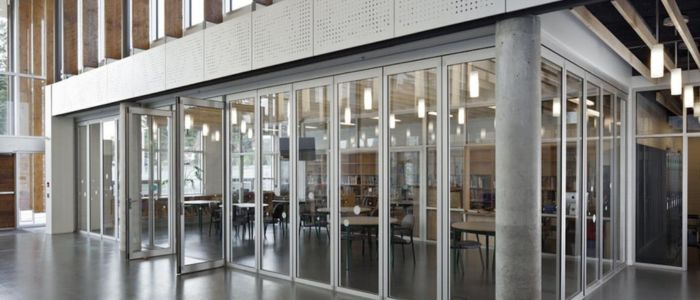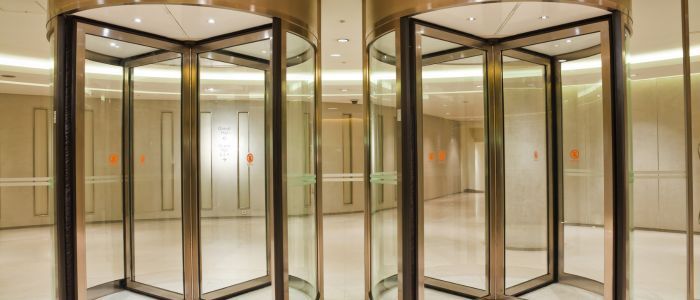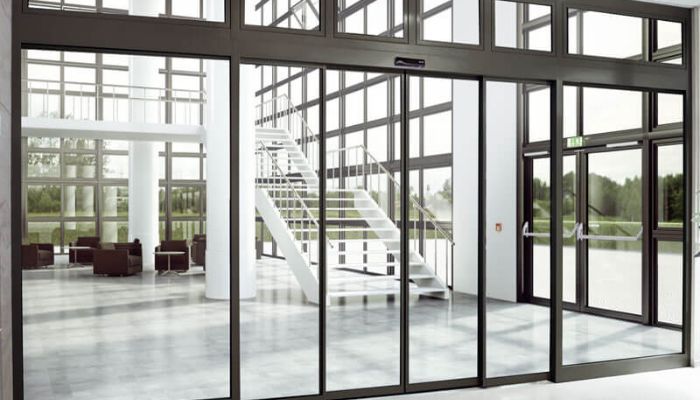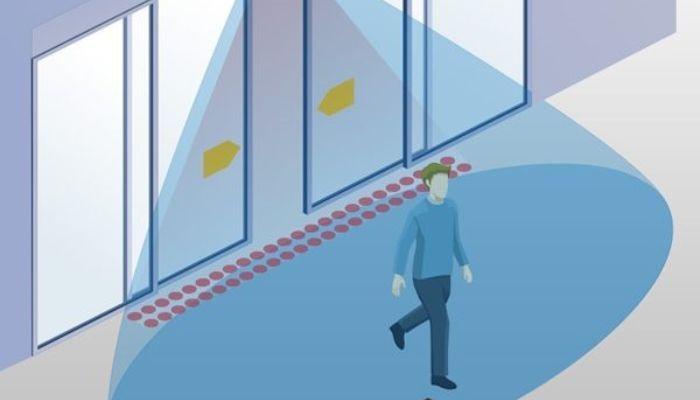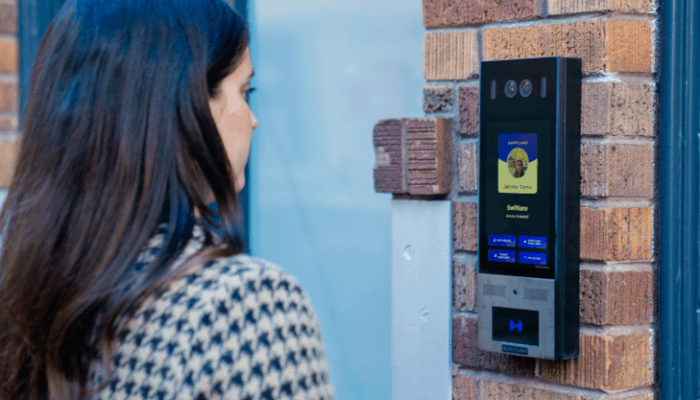Automatic door systems have become an essential component of modern architecture and are now an indispensable part of our daily lives. They offer convenience, security, and energy efficiency for various commercial and public properties.
This comprehensive guide will discuss the types of automatic door systems, how they work, and the sensors involved in their operation. We will also explore the benefits of automatic door systems and how modern access control and video intercom systems can provide enhanced security solutions for commercial properties.
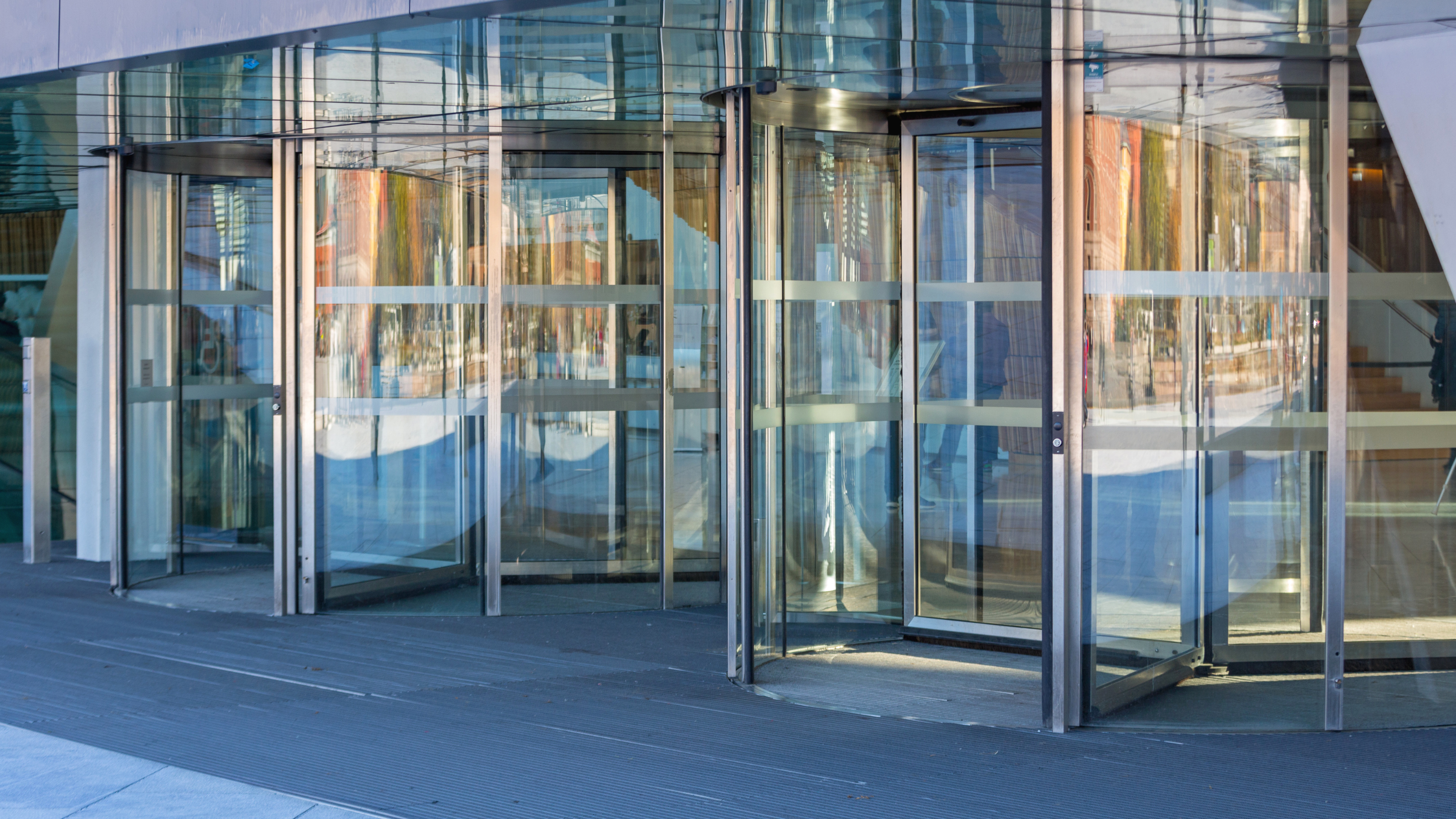
Table of contents
- What Automatic Door Systems Are
- Types of Automatic Door Systems
- How Automatic Door Systems Work
- Benefits of Automatic Door Systems
- Modern Access Control and Video Intercom Systems
- The Most Popular Automatic Door Systems in the Commercial Industry
- The Importance of Modern Access Control Systems
Suggested Posts:
- Guide to Touchless Access Control Systems
- Expert Guide to Commercial Door Lock Types: Master the Art of Business Security
- Compare – Best Cloud Based Access Control Systems (Apr 2023)
- Guide to Touchless Access Control Systems
- How Key Fob Door Entry Systems are Reshaping
What Automatic Door Systems Are
Automatic door systems are electromechanical devices that facilitate the opening and closing of doors in a hands-free manner, providing convenience, accessibility, and improved security for both commercial and residential buildings. These systems are commonly found in a wide range of settings, including airports, hospitals, shopping malls, hotels, and office buildings.
Designed to optimize pedestrian traffic flow and enhance overall user experience, automatic doors are equipped with various sensors and mechanisms that work in tandem to detect an approaching individual, allowing the door to open smoothly and then close securely behind them. In addition to their practicality, automatic door systems offer numerous benefits, such as energy efficiency, improved hygiene, and enhanced security.
There are several types of automatic door systems available in the market, each utilizing different mechanisms and sensors to cater to the specific needs of a building or facility. Understanding the various types of automatic door systems and the technology behind them will help you make an informed decision when selecting the best option for your property.
Types of Automatic Door Systems
Automatic doors are available in different styles and configurations to suit specific applications and building requirements. The following are some common types of automatic door systems:
Sliding Doors: These are commonly found in commercial properties like retail stores, airports, and hotels. Automatic sliding doors glide along a track and usually consist of two or more panels that slide past each other. They can be single or double automatic sliding doors and may use a variety of sensors, such as infrared, motion, or pressure sensors.
Swing Doors: Swing doors are suitable for smaller retail businesses, schools, universities, and hospitals. These doors are designed to swing open and closed, either inward or outward. They can be operated using push buttons, access control systems, or sensors like infrared or motion detectors.
Revolving Doors: Revolving doors are often used in high-traffic areas like banks, hotels, and corporate buildings. They consist of multiple door panels that rotate around a central axis, allowing people to enter and exit simultaneously. This type of door system can be operated manually or automatically and may use sensors like infrared or light beams to detect obstructions and prevent accidents.
Bi-Folding Doors: These doors are suitable for locations with limited space and are typically seen in shopping centers, commercial buildings, and hotels. Bi-folding doors consist of two or more panels that fold against each other when opened. They can be operated using various sensors, such as infrared, motion, or pressure sensors.
Telescopic Doors: Telescopic doors are a variation of automatic sliding doors and are used when wider door openings are required. They consist of multiple sliding panels that retract into a smaller space, providing a larger opening. Telescopic doors can use infrared, motion, or pressure sensors to operate.
How Automatic Door Systems Work
Automatic door systems consist of a combination of mechanical, electrical, and electronic components working together to provide seamless and convenient access. A typical automatic door system includes a door operator, sensors, and a control system. The door operator is responsible for opening and closing the door, while sensors detect the presence of people or objects and trigger the door to open or close. The control system manages the overall operation and may include features like timers, access control systems, and safety features.
Sensors in Automatic Door Systems
Sensors play a crucial role in the operation of automatic door systems. They detect the presence of people or objects, which triggers the door to open or close. There are several types of sensors used in automatic door systems, including:
- Infrared Sensors: Infrared sensors detect the presence of people or objects by measuring the infrared radiation emitted by them. When an object or person is detected, the sensor sends a signal to the door operator to open or close the door.
- Motion Sensors: Motion sensors, such as Doppler radar or ultrasonic sensors, detect the movement of people or objects. When motion is detected, the sensor sends a signal to the door operator to open or close the door.
- Pressure Sensors: Pressure sensors, like pressure mats or floor-mounted sensors, detect the weight of a person or object. When pressure is applied, the sensor sends a signal to the door operator to open or close the door.
- Beam Sensors: Light beam sensors, also known as photoelectric sensors, use a beam of light to detect the presence of people or objects. When the beam is interrupted, the sensor sends a signal to the door operator to open or close the door.
Benefits of Automatic Door Systems
Automatic door systems offer several advantages for commercial and public properties, such as:
Convenience
Automatic doors provide easy access for people carrying luggage, pushing carts, or using mobility aids, making them ideal for airports, hotels, shopping centers, and other high-traffic areas.
Energy Efficiency
By opening and closing quickly, automatic doors help maintain a consistent indoor temperature, reducing heating and cooling costs.
Hygiene
Automatic doors eliminate the need for physical contact with door handles, making them suitable for healthcare facilities and food processing plants where sanitation is a priority.
Accessibility
Automatic doors comply with the requirements of the Americans with Disabilities Act (ADA) and similar legislation, ensuring that public buildings are accessible to people with disabilities.
Modern Access Control and Video Intercom Systems
While automatic doors provide convenience and security, modern access control and video intercom systems can offer additional benefits for commercial properties. These advanced systems provide a higher level of security and control over who can access the building.
Access Control Systems
Access control systems use electronic devices like key cards, fobs, or biometric scanners to grant or deny entry to authorized individuals. These systems can be integrated with automatic door systems, allowing for more secure access and the ability to track who enters and exits the building. Some benefits of access control systems include:
- Improved security by restricting access to authorized individuals only.
- The ability to track and monitor entry and exit times, which can be useful for time and attendance management.
- Elimination of physical keys, reducing the risk of lost or duplicated keys.
- Remote management of access permissions, enabling building managers to grant or revoke access quickly and easily.
Video Intercom Systems
Video intercom systems allow for visual and audio communication between the person seeking entry and the building occupants. They can be integrated with automatic doors and access control systems to provide an additional layer of security. Some advantages of video intercom systems include:
- Visual identification of visitors before granting access, reducing the risk of unauthorized entry.
- The ability to communicate with visitors without opening the door, enhancing security and privacy.
- Remote monitoring and management of visitor access, allowing building managers to view and communicate with visitors from anywhere with an internet connection.

The Most Popular Automatic Door Systems in the Commercial Industry
In the commercial industry:
- Automatic sliding doors are the most popular type of automatic doors, accounting for approximately 60% of installations
- Swing doors are the second most popular option, with a market share of around 25%
- Revolving doors, bi-folding doors, and telescopic doors make up the remaining 15%, with each type of door system catering to specific building requirements and aesthetic preferences
The Importance of Modern Access Control Systems
As security becomes a top priority for commercial properties, the implementation of modern access control systems is essential. These systems offer several benefits, including improved security, streamlined access management, and enhanced convenience for building occupants. By integrating access control systems with automatic door systems, commercial properties can ensure the highest level of security while maintaining ease of access for authorized individuals.
Conclusion
In conclusion, automatic door systems have come a long way since their inception in the 1950s. They offer numerous benefits, including convenience, accessibility, energy efficiency, enhanced security, improved hygiene, aesthetic appeal, and reduced maintenance requirements. These systems are adaptable to various types of properties, making them an ideal choice for both commercial property and residential settings.
By understanding the benefits and different types of automatic door systems available, you can make an informed decision when considering the installation of these innovative solutions for your property. As technology continues to advance, automatic doors will likely become even more sophisticated and efficient, further enhancing their value and utility in our everyday lives.
Tell Us About Your Building
and our team will reach out with a quote


